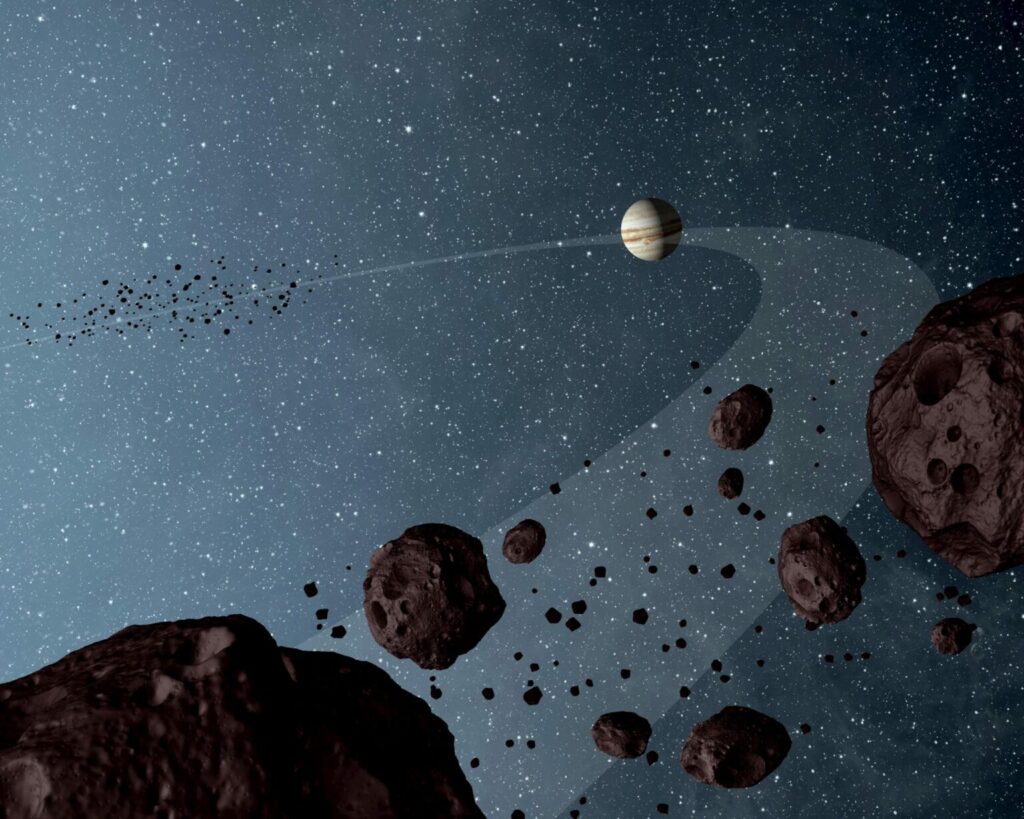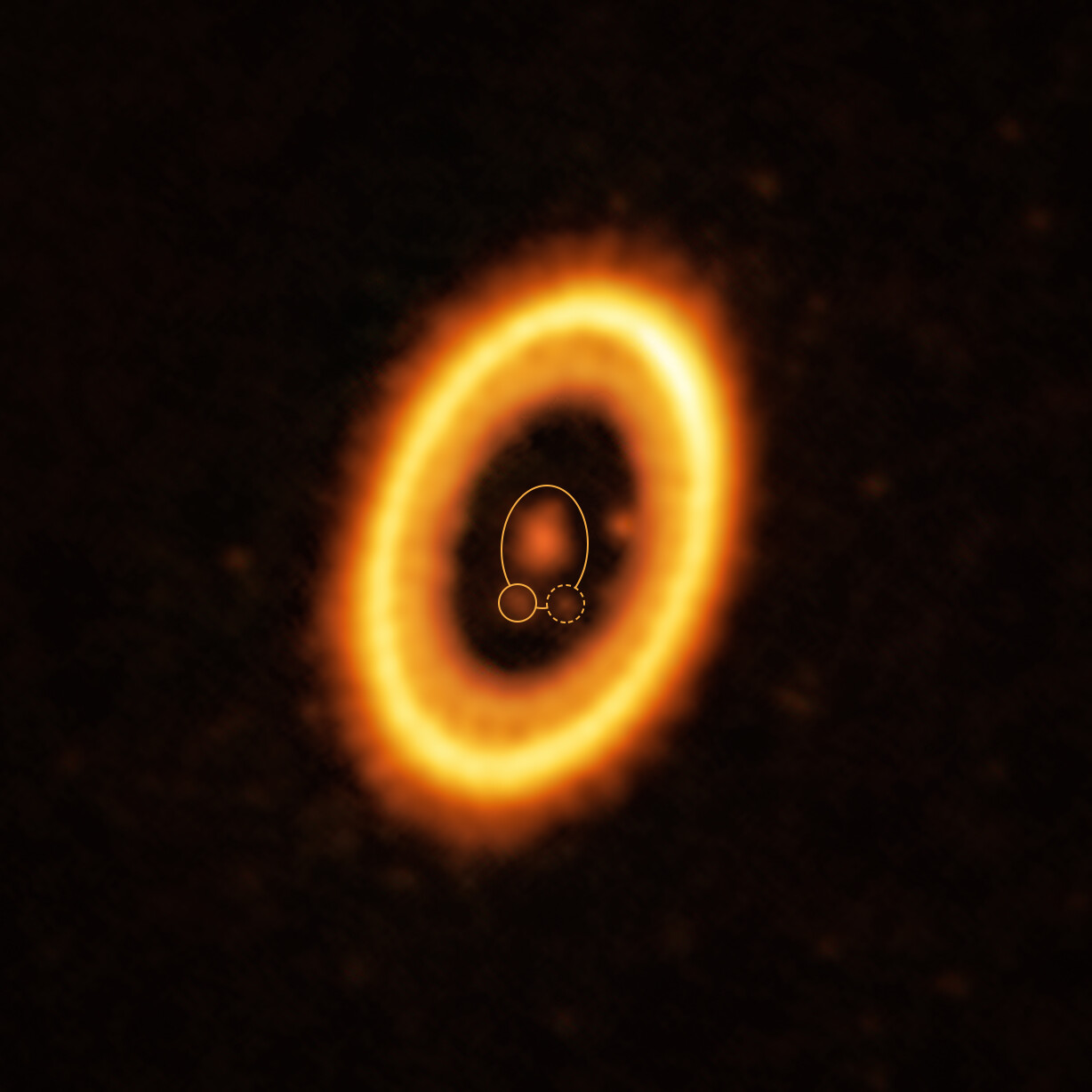Using the ALMA radio telescope complex, an international team of researchers has discovered a possible “brother” of an exoplanet orbiting a distant star. If the discovery is confirmed, it will be the most convincing proof that two exoplanets can share the same orbit.
Are Trojan planets possible
Two decades ago, it was theoretically predicted that a pair of planets with a comparable mass could share the same orbit around their star. Such bodies are also called Trojan (co-orbital) planets.

There are no Trojan planets in our Solar System right now, but there are Trojan asteroids. The most famous example is the Trojan asteroids of Jupiter: more than 12 thousand rocky bodies located at the Lagrange points L4 and L5 of the Sun–Jupiter system. In addition, many astronomers did not rule out that in the distant past there were Trojan planets in the Solar System. According to one hypothesis, the protoplanet Theia, which collision with the Earth gave birth to the Moon, could have just formed at one of the Lagrange points.
However, until recently, all this remained only a theory, and the Exotrojans were perceived by astronomers as a kind of unicorns: their existence was allowed by science, but no one ever discovered them. Everything has changed thanks to ALMA.
Two worlds in the same orbit
In the course of their research, an international team of researchers sent ALMA to the young star system PDS 70, located 370 light-years from Earth. It consists of a newborn orange dwarf surrounded by a protoplanetary disk, in which exoplanets are forming right now.

Until recently, astronomers were aware of the existence of two Jupiter-like exoplanets in this system. But during the analysis of ALMA data, they managed to detect a weak signal from the vicinity of one of them. It indicates that there may be a cloud of debris with a mass about twice the mass of our Moon.
The debris cloud found by ALMA may indicate a Trojan world existing in this system or a planet still in the process of formation. This opens up a very intriguing possibility of the existence of two worlds in the same orbit. Especially if we are talking about planets in the habitable zone.
To fully confirm their discovery, the team will have to wait until 2026, when, with the help of ALMA, they will be able to see whether both PDS 70b and the found debris cloud are significantly shifting in orbit around the star. According to the researchers, a positive result will be a breakthrough in the field of exoplanetary research.
According to https://www.eso.org
Follow us on Twitter to get the most interesting space news in time
https://twitter.com/ust_magazine
